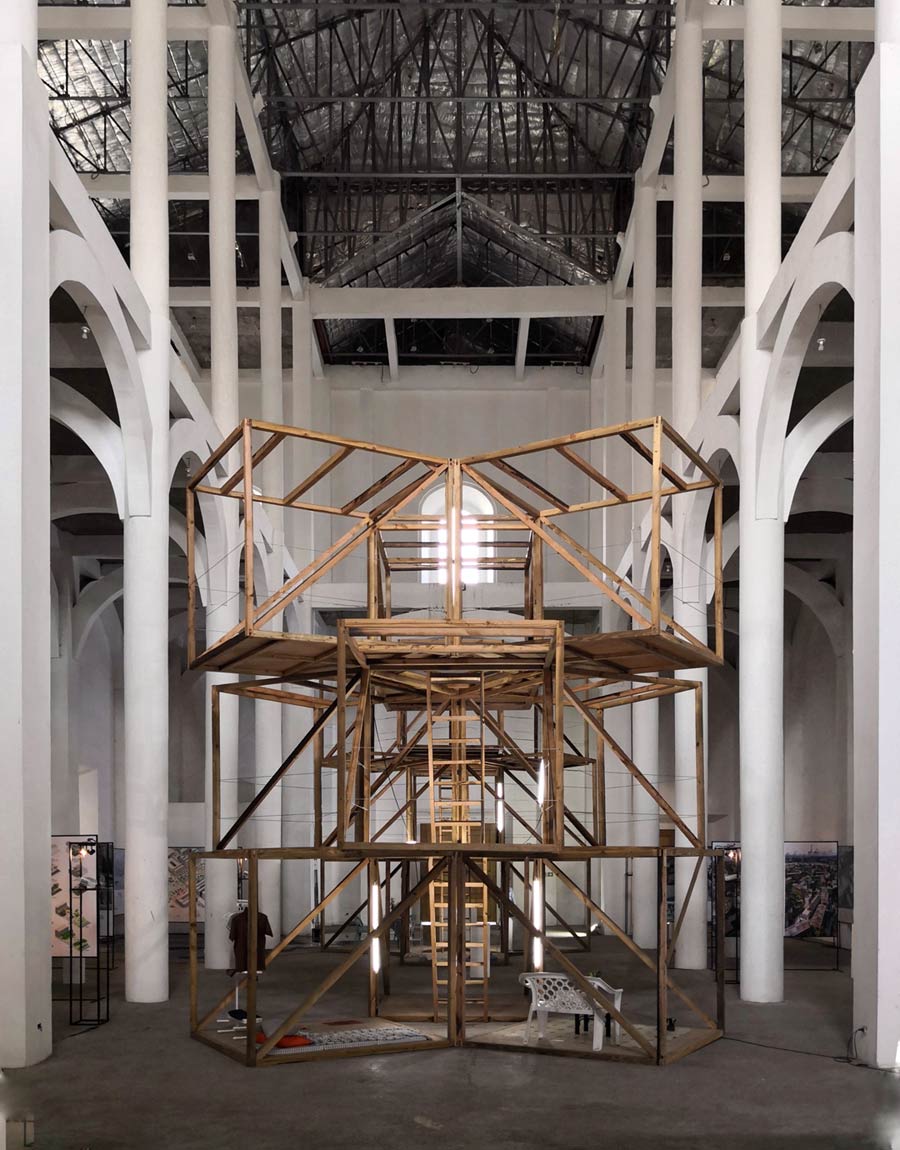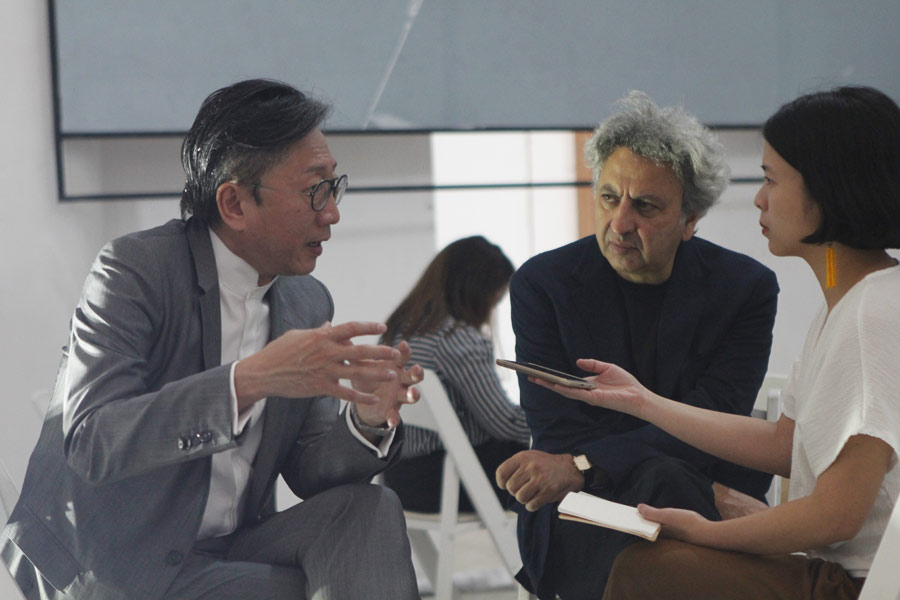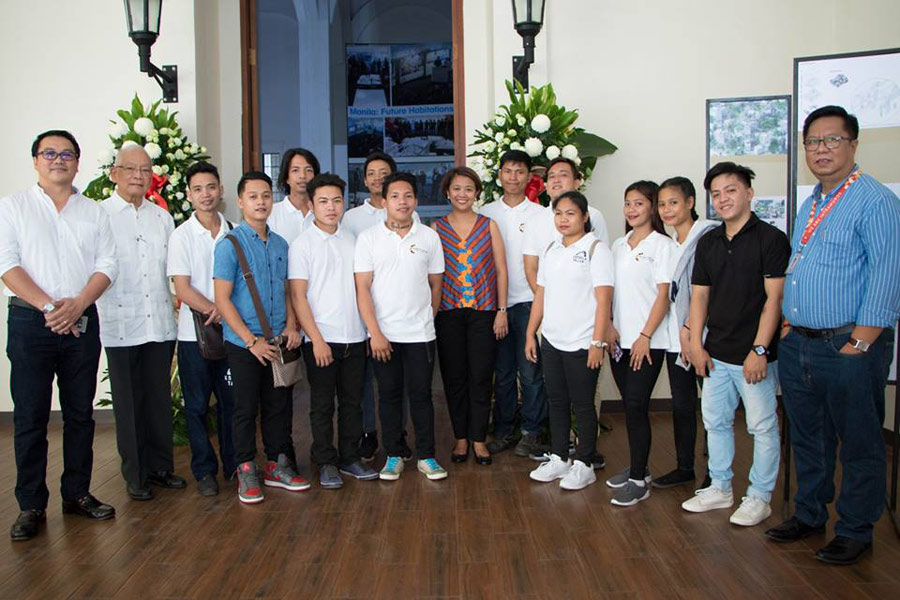
Escuela Taller to improve and alter Harvard University GSD proposals for Manila
Harvard University Graduate School of Design (GSD) and AECOM presented the proposals from their Spring studio study of four local sites through the Manila: Future Habitations exhibit which opened on 28 September 2018 at the San Ignacio Church.
The studio illustrated urban design as jigsaw puzzle solving, and demonstrated how local coherence across Intramuros, Port Area, Pasig River, and Baseco was achieved by considering beyond the challenges of individual sites. The graduate students involved also prototyped new types of dwellings and connective tissue for our city.
“I think Manila has had some success planning-wise, but these are like urban islands. You see these happen and continue to happen only in certain areas, but that’s not going to make Metro Manila as a whole habitable or livable. We need to break those shells proactively to connect the adjacent parts—from small cells to a bigger organism. Here you can see Intramuros re-developed, but it’s not only within the walls, it’s about how it can connect to the bayfront, to the riverfront, to public transit. I think this studio reminds us how important this ‘bigger picture’ aspect of planning is,” shared AECOM Asia Pacific president Sean Chiao during an interview with BluPrint at the exhibit opening.
READ MORE: Harvard GSD Manila Studio 2018 output now on display in Intramuros

13 graduate students with architecture, landscape architecture, and planning backgrounds and their studio professors visited Manila in February this year to inspect and document the sites. Interviews with stakeholders and residents, as well as seminars with local designers and officials were included in their week-long immersion. The information and insights they retrieved were then processed when they returned to school. The final review, in which LVLP’s Andy Locsin and BCDA consultant AK Dorotan were present, happened on 2 May 2018.
With almost all the studio participants (save for one Filipino-American) encountering Manila and its culture for the first time, it is reasonable to wonder if the proposals are utopian. Were there stakeholder consultations in the midst of refining the ideas? How did the students make sure that the solutions were really rooted in the contexts of sites?
“The time was relatively short, so obviously, we got our input from the stakeholders—their concerns and challenges—when we were here earlier this year. Then there was an interim review halfway through the studio. Colleagues from AECOM and those familiar with the situation were part of that. And now, we completed the exhibition and the report, and hopefully today we get more feedback from you here. Our goal is to keep this conversation going, to find a way that we would have follow up meetings where we can really present and debate the reactional feedback that we are getting,” responded Harvard GSD dean Mohsen Mostafavi.
“This is not work in which you can say after six months: We’ve solved it! It’s really just the beginning of a longer conversation. It’s not a typical planning process, it is more of a propositional process. We have come back to get recommendations. And hopefully part of the benefit of this kind of work, since the output is concrete and specific, is that people can react to it very directly. We’d be interested to see how the communities co-op this work because we would like it if they looked at the material and transformed it, come up with alternate suggestions,” he added.

When another set of graduates visited the exhibit, an alternative narrative began. A contingency from Escuela Taller (ET), a training center for out-of-school youth to equip them for heritage conservation, dropped by Manila: Future Habitations the day after it opened. Some of them, being residents of Baseco and Intramuros, toured the Harvard GSD studio around their communities during the site visits in February. Escuela Taller Communications officer Philip Paraan recounted a portion of their exhibit visit on Facebook:
“Some were purely skeptic, some of them clueless or cannot imagine if turning Baseco into this is really feasible. With one of designs that made use of container vans, one of them reacted : ‘Ang init nyan! (That will be hot inside)’ Yung iba mga tanung lang ang reaction. (Meanwhile, others reacted by asking questions.) I guess being entrenched in their reality and how society sees them makes them think differently. Iba ang sensibilities at sense of reality ng mga urban poor. (The urban poor have different sensibilities and a sense of reality.) They have a profound spatial intelligence that is only theirs.”

When Intramuros Administration administrator Guiller Asido read the Facebook thread, he set a meeting with Escuela Taller to discuss the possibility of forming a feedback system with the students. The meeting, in which BluPrint was present, happened in the afternoon of 4 October 2018 at the IA Office.
“Gusto natin na hindi lang siya manatiling isang exhibit, na after maipakita ito wala nang mangyayari. May kailang pa ma-improve ika nga ng mga taga-ET, pero gusto namin maging participatory ang approach. This way magkaroon ng ownership na rin a susunod na gagawin,” said Asido. (We want it to go beyond being just an exhibit. The students of Escuela Taller have spoken, the designs do need improvement, and we want more from the community to participate in the feedback process. They can gain a sense of ownership this way.)
The initial ideas for the reactionary process included the following:
– Organizing members of the four communities (Intramuros, Baseco, Port Area, and Pasig River) to visit the exhibit and conduct a focus group discussion with them afterwards
– Setting up the housing prototype (specifically the Baseco housing skeleton) in Baseco and have the barangay officials assist in the house-to-house collection of comments
– Based on the suggestion of Berna Lucindo, an ET graduate from Baseco present in the meeting, the prototype will be replicated so that it can be set up in multiple sites within Baseco. The community can then respond to the proposal by completing the structure through their own finishes, alterations, and innovations. The additions will be documented as the community’s reaction and integrated into a final model, similar to the process they went through in the Rolling Manila project. This framework has yet to address the questions of structural safety and management of tenants (in the event that the structure will be occupied).
– Escuela Taller students and graduates, having already undergone construction training, will come up with their own proposals or alternatives in response to Manila: Future Habitations. “Mas nakakapa namin ang lugar namin (We know our communities better than anyone else.),” said Rommel Rivera, an ET graduate who lives in Intramuros. Then, the prototypes that come from these proposals will be presented to or immersed in the communities for feedback.
We still await updates on what the final process will be and when it will roll out. In the meantime, use our Facebook comments section to chime in on how ET and IA can improve the feedback loop. ![]()
READ MORE: Out-of-school youth turned masons tasked to conserve Paco Park


